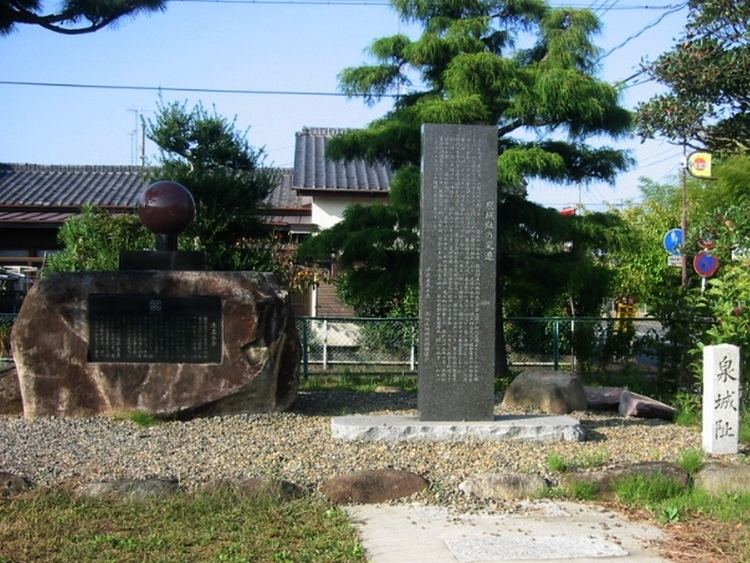 | ||
Izumi Domain (泉藩, Izumi-han) was a feudal domain under the Tokugawa shogunate of Edo period Japan, located in southern Mutsu Province in what is now part of modern-day Iwaki, Fukushima.
Contents
History
In 1622, Torii Tadamasa, daimyō of Iwakitaira Domain was transferred to Yamagata Domain, and his place was taken by Naito Masanaga. Masanaga transferred 20,000 koku of his 70,000 koku domain to his eldest son, Naitō Tadaoki who established a separate household. On Masanaga’s death in 1634, Tadaoki inherited Iwakitaira Domain and turned his 20,000 koku holding over to his brother, Naitō Masaharu, who received official confirmation as a daimyō. The marked the start of Izumi Domain. His son, Naitō Masachika ruled from 1646-1696, and also served as wakadoshiyori from 1690-1696. His son, Naitō Masamori was transferred to Annaka Domain in 1702.
Izumi Domain was then assigned to Itakura Shigeatsu, with a reduction in revenues to 15,000 koku. His son, Itakura Katsukiyo served as rōjū and traded places with Honda Tadayuki of Sagara Domain in 1746. The Honda clan continued to rule Izumi domain through the remainder of the Edo period. Tadayuki’s son, Honda Tadakazu caught the eye of rōjū Matsudaira Sadanari after successfully reforming the domain’s finances, and was promoted to wakadoshiyori and sobayonin, where he played an important role in the Kansei Reforms. As a reward for his efforts, his revenues were increased by 5000 koku. The 5th daimyo of Izumi, Honda Tadanori established the domain’s academy in an effort to modernize the domain in the Bakumatsu period. Honda Tadatoshi served as Jisha-bugyō and who led the domain in support of the Tokugawa during the Boshin War. Following the Meiji restoration, he was punished for his support of the Ōuetsu Reppan Dōmei by a reduction in income of 2000 koku, and was forced to resign in favor of his adopted son Honda Tadanobu, who served as domain governor until the abolition of the han system in 1871.
Holdings at the end of the Edo period
As with most domains in the han system, Izumi Domain consisted of several discontinuous territories calculated to provide the assigned kokudaka, based on periodic cadastral surveys and projected agricultural yields.
